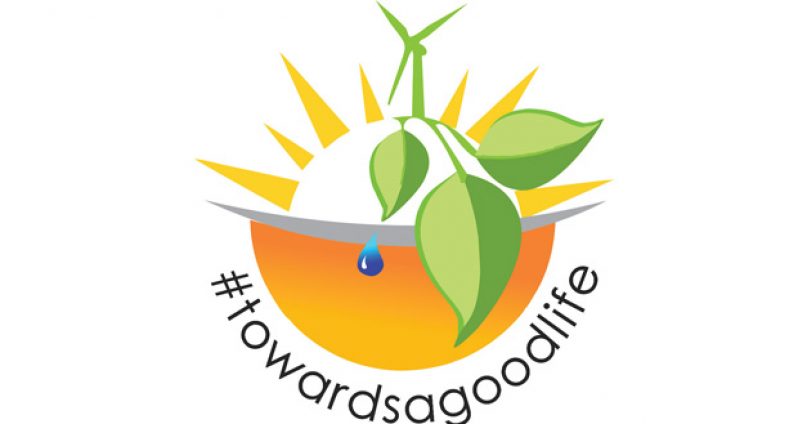Individual digital responsibility
By Malcolm Williams
I SAT reminiscing about how it seems like just yesterday I was rushing home, my heart pounding, chest bursting with excited anticipation. All day I had waited with bated breath and in humble, prayerful supplication for the download of the PASCAL compiler and tools.
Several older youth may know that excitement; for example, waiting for a picture to download on dialup Internet service, circa 1997. Today’s youth, like my colleagues who are smiling at me as I write, will not know such excitement because of the number of advances made in Internet and telecommunication technologies to date. These advances brought greater access; variety of services; and concomitantly, risks and malicious activities. Building on the Head of eGovernment’s call for Government intervention regarding access to the Internet and eServices, in this article we call for your intervention in the form of individual digital responsibility, which we posit is an essential element of citizens (you) connecting digitally for the “Good Life.”
Today, revolutionary things are happening in the telecommunications sector. The days of despair at the nerve grating noise of modems connecting to dialup service and dropped Internet connections are long gone. The telecommunications sector is undergoing transformation.
For example, the move to go beyond supporting apps like Whatsapp and Skype to the present promises of streaming videos, digital television, and Internet gaming via mobile technology are examples of transformation. But the transformation does not stop there. Accompanying these advances is the apparent ubiquitous requirement to know and be capable of differentiating between mobile technologies. Popular media have it that there have been advances from 1G through 2G, 3G, and more recently to 4G mobile technologies.
So what’s with all those “G”s? The “G” is short for generation and the number tells the evolutionary level of a set of telephone network standards (eg AMPS, TDMA, GSM, LTE) used to implement specific mobile phone systems. The advance in generation is fuelled by the need to intelligently squeeze more bandwidth out of available wireless spectrum.
It all started with the first generation, 1G, in the 1980s. 1G allowed seamless mobile voice (analog) communications only. Some may recall the $20,000 Nokia “cake soap” hand-held device and the freedom from localised landlines. Though amazing to us, internationally there was a call for change. 1G was deemed inefficient, expensive, and made limited use of the underlying technologies.
Second generation, 2G, was introduced in the 1990s with a shift from analog to digital communication. It featured increased capacity, allowed mass access, and was more scalable. This led to reduced costs, smaller ‘pocket sized’ flip phones and devices, and greater accessibility. Yet, again, there were deficiencies; 2G was capable of efficiently supporting small data files only; i.e. text and email messaging.
Driven by ever increasing demands to connect faster, more reliability and from anywhere in real-time, third generation, 3G, was developed in the 2000s. 3G brought high-speed broadband Internet access, better security, SIM cards, and it was also optimised for mobile data. Note that 3G is manifested in the use of smartphones and mobile broadband services, such as multimedia streaming and navigation that we have all come to depend on.
Further, 3G evolved into “multimode 3G”, or fourth generation, 4G, in the form of WiMAX and LTE. 4G LTE (first international broadband standard) delivers faster speeds and reduced latencies, thus facilitating real-time connections and improved user experiences. 4G continues to evolve, with the introduction of 4G LTE Advanced promising greater capacities and speeds and a future 5G.
The rapid evolution of mobile technology has redefined what it means to be a citizen. Thus enters the concept of digital citizenship. Advances in technology have provided greater opportunities and increased risks of cyber bullying, identity theft, and other forms of cybercrimes. As more people connect at faster speeds and acquire digital literacy skills, the key to achieving the digital ‘Good Life’ is to consistently practise sensible and reasonable online interactions. This is the hallmark of digital citizenship and responsibility.
In the real world, we reasonably expect to enjoy fundamental rights. In return, we accept certain responsibilities, such as paying taxes and following the law. Likewise, online we should enjoy the rights to benefits of the Internet. This includes accessing information safely, securely and privately, while accepting certain responsibilities.
Digital responsibilities entail reporting issues such as bullying, harassment, and identity theft to the appropriate authorities. They also entail respect for intellectual property copyrights. Parents and guardians must educate and model digital responsible behaviour.
An important part of being a digitally responsible citizen is to be safe online. This requires individual continuous education about methods of keeping one’s data/information safe, and managing personal information on social networking spaces responsibly by configuring appropriate privacy settings.
Finally, it is important that, as a responsible digital citizen, you do not, in any way, falsify your own identity.
Comments can be sent to towardsagoodlife@gmail.com.
(Malcolm Williams is a lecturer in the Department of Computer Science at the University of Guyana, and a consulting Director for Policy and Training, at the eGovernment Agency. His research involves Knowledge Management and Technology Adoption. For additional information or assistance on being a digitally responsible citizen, please send questions, comments and suggestions to info@egovguyana.net)




.png)









